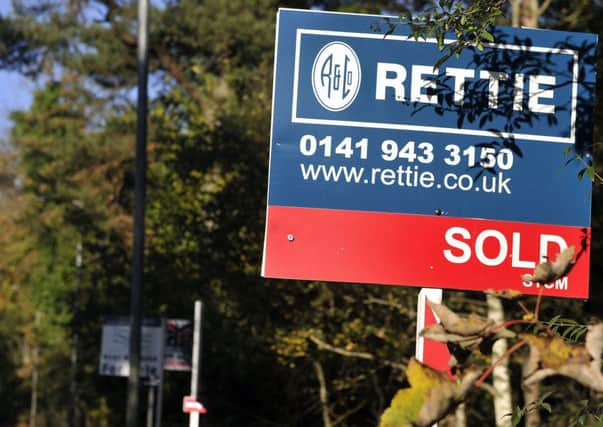John Boyle: Is indyref2 hitting the property market?
This article contains affiliate links. We may earn a small commission on items purchased through this article, but that does not affect our editorial judgement.


The Scottish residential rental market has been in a state of excess demand for some time. The population of the country has been growing over the last decade or so (by close to 10 per cent) and the proportion of households in the private rented sector (PRS) has doubled in this time.
As a result, rents have been steadily marching upwards (by 9 per cent in the last three years). Time to let is also on a downward trend.
Advertisement
Hide AdAdvertisement
Hide Ad• READ MORE: Edinburgh to get new £215m build-to-rent ‘village’
This state of excess demand looks like continuing. Demand should remain strong, but supply is likely to come under pressure with UK-wide changes to mortgage tax relief and other allowances; the introduction of the additional dwelling supplement and new Prudential Regulation Authority stress tests on borrowing all combining to squeeze private landlords and their ability to supply.
In Scotland, there are the additional complications for landlords around the implementation of tenancy reform this year, with the end of “no fault possession”, the loss of the initial period (meaning that all tenancies essentially can only be a minimum of 28 days), and the prospect of rent controls.
As a result of all of this, supply looks likely to come under pressure, pushing out rents and the squeezing the affordability of housing in Scotland’s main cities.
The big potential game changer in tackling these supply pressures is the build to rent sector, with institutional investors bringing forward a large number of units in the likes of London and Manchester. However, to date, there is only one such scheme operating in Scotland (Lasalle at Forbes Place near Aberdeen) and political risk is cited as the most common reason for the lack of development here.
The now highly likely prospect of a second independence referendum has reduced the appetite of the UK funds in particular of investing in Scotland, with concerns raised about future current and taxation issues. Scotland offers an additional political risk not present in some of the regional English cities that also have strong market fundamentals.
Nevertheless, there are further schemes in the pipeline in Scotland and this may serve to get the sector moving by creating exemplars. Moda/Apache recently agreed the deal to develop out 500 units in Fountainbridge in Edinburgh. They also have another site at Pitt Street in Glasgow (365 units), with proposals also in Glasgow for build to rent development at Candleriggs for 512 units (by Candleriggs) and Merchant City for around 600 units (by Get Living).
Advertisement
Hide AdAdvertisement
Hide AdIn addition, affordable PRS, or mid-market rent schemes, are now flourishing across Scotland and the local authority sector is also alive to the opportunities for open market and mid-market rent, with the City of Edinburgh Council about to launch its Edinburgh Homes initiative to attempt to deliver such output at scale.
The fundamental market driver of excess demand for rental product in Scotland is likely to stay with us for some time, regardless of the political environment, and this will drive the opportunities.
The relative lack of interest by some of the major UK institutions in Scotland does drive a “first mover” opportunity for other funds and this is now being seen.
• Dr John Boyle is director of research and strategy at Rettie & Co